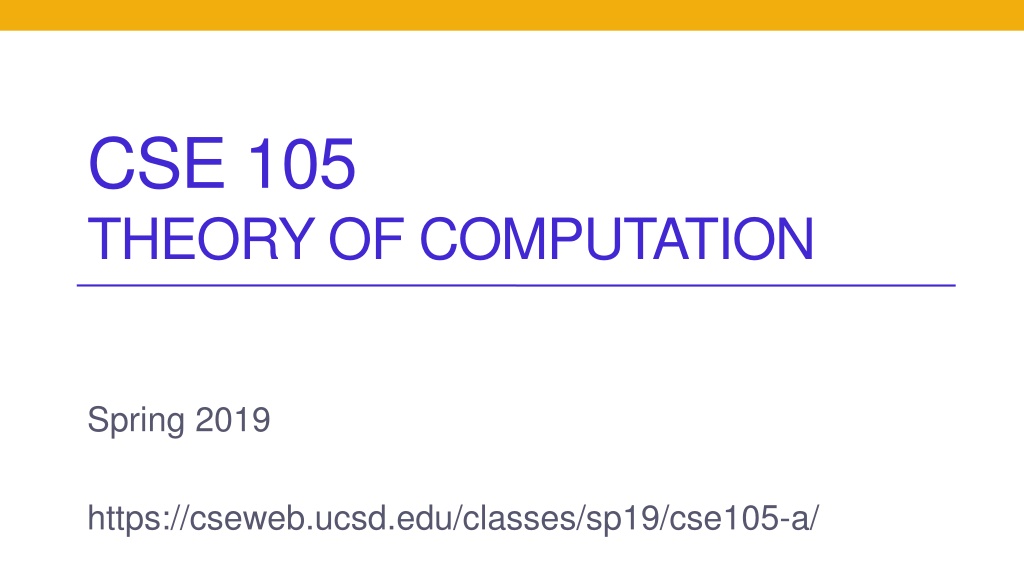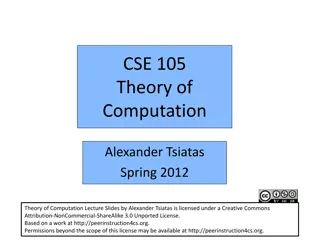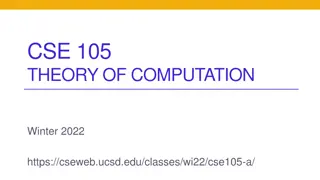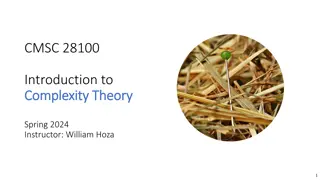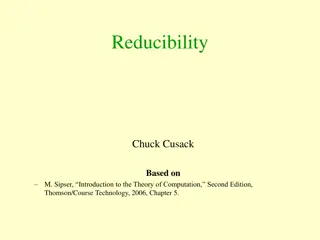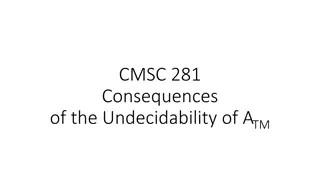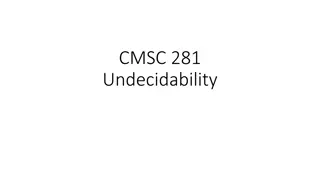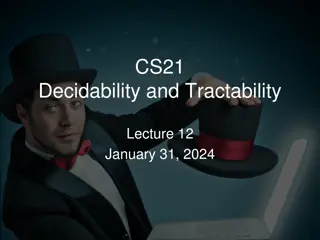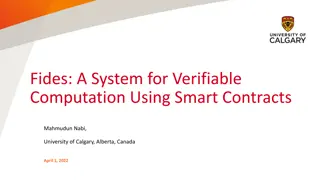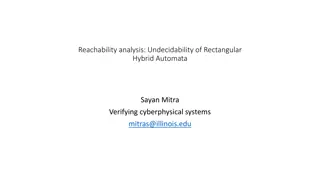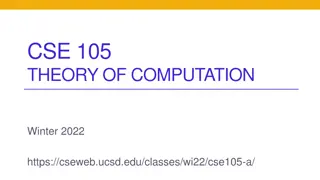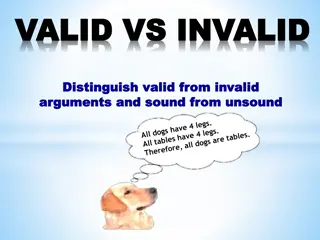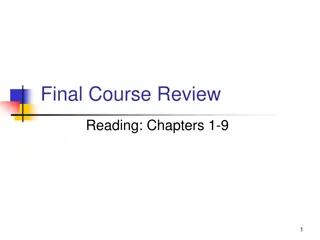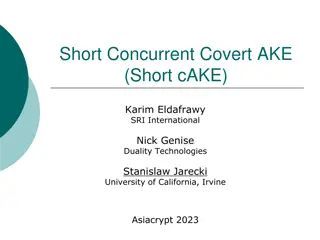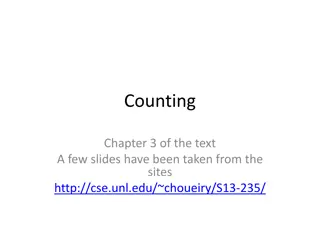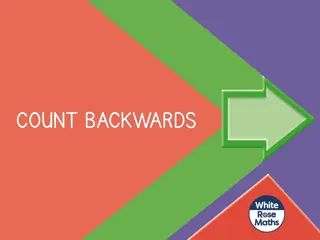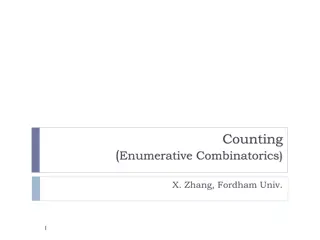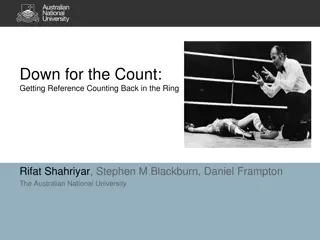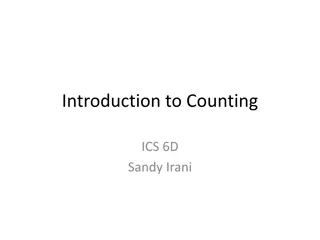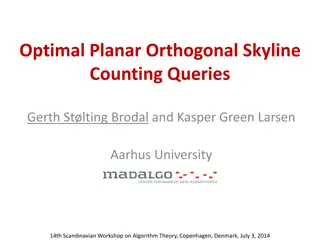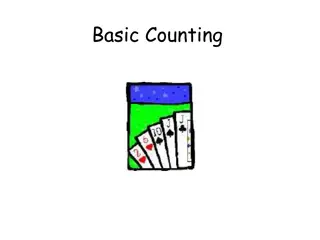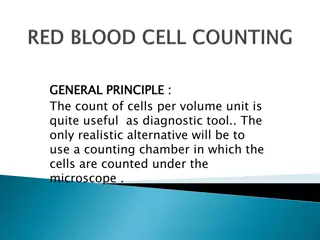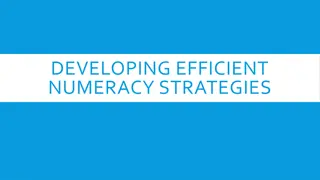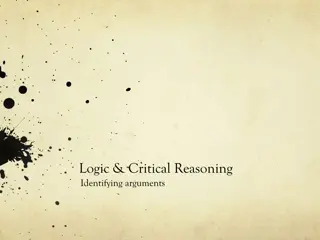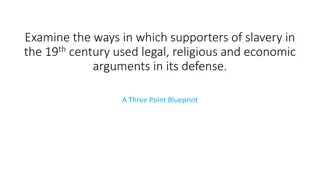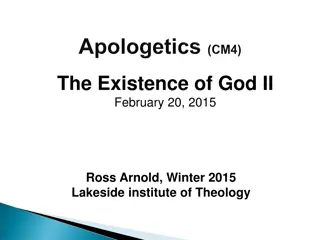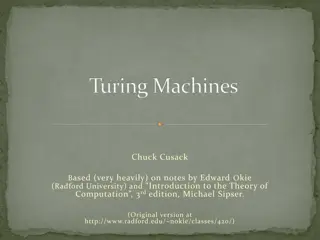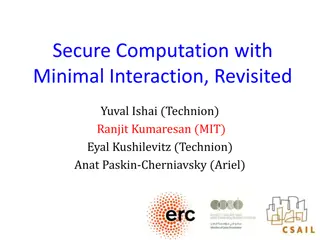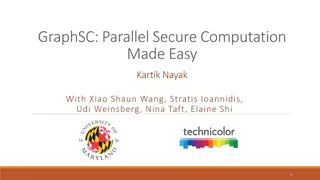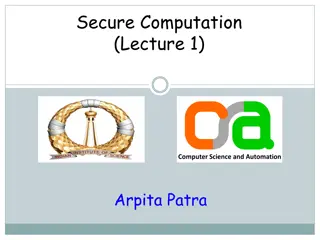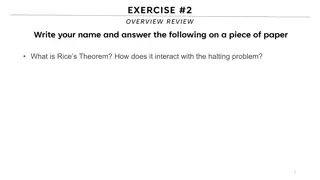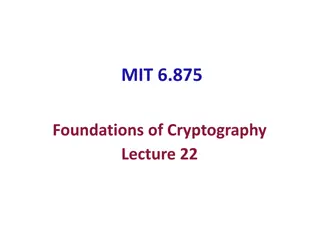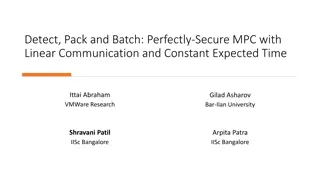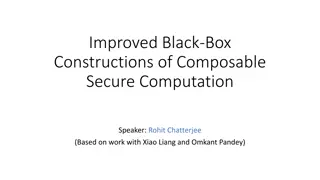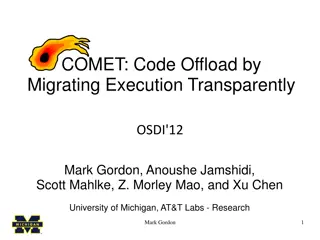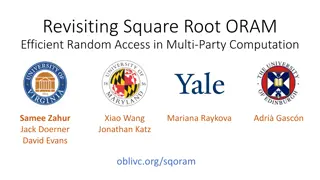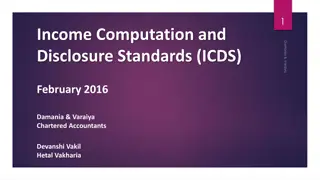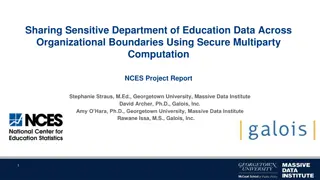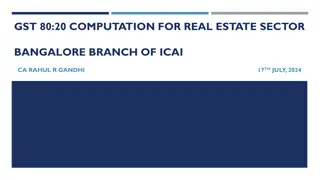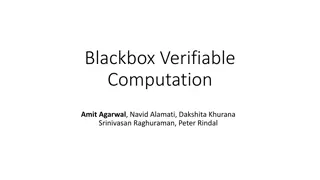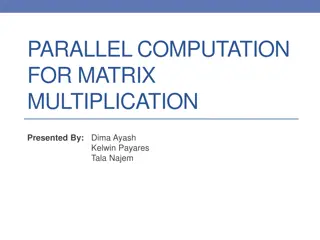Exploring Theory of Computation: Undecidability and Counting Arguments
Dive into the world of theory of computation with a focus on undecidability, counting arguments, and examples of non-Turing recognizable languages. Discover the intricacies of proving problems as undecidable and delve into the concepts of Turing-recognizable sets and deciders for complex computational challenges.
Download Presentation

Please find below an Image/Link to download the presentation.
The content on the website is provided AS IS for your information and personal use only. It may not be sold, licensed, or shared on other websites without obtaining consent from the author. Download presentation by click this link. If you encounter any issues during the download, it is possible that the publisher has removed the file from their server.
E N D
Presentation Transcript
CSE 105 THEORY OF COMPUTATION Spring 2019 https://cseweb.ucsd.edu/classes/sp19/cse105-a/
Today's learning goals Sipser Ch 4.1, 4.2 Trace high-level descriptions of algorithms for computational problems. Use counting arguments to prove the existence of unrecognizable (undecidable) languages. Use diagonalization in a proof of undecidability.
Undecidable? There are many ways to prove that a problem is decidable. How do we find (and prove) that a problem is not decidable?
Counting arguments Before we proved the Pumping Lemma We proved there was a set that was not regular because Uncountable All Regular Sets All sets of strings Countable
Counting arguments Uncountable All Turing- recognizable sets Countable All sets of strings Why is the set of Turing-recognizable languages countable? A. It's equal to the set of all TMs, which we showed is countable. B. It's a subset of the set of all TMs, which we showed is countable. C. Each Turing-recognizable language is associated with a TM, so there can be no more Turing-recognizable languages than TMs. D. More than one of the above. E. I don't know.
Satisfied? Maybe not What's a specific example of a language that is not Turing-recognizable? or not Turing-decidable? Idea: consider a set that, were it to be Turing-decidable, would have to "talk" about itself, and contradict itself!
ATM Recall ADFA = {<B,w> | B is a DFA and w is in L(B) } Decider for this set simulates arbitrary DFA ATM = {<M,w> | M is a TM and w is in L(M) } Decider for this set simulates arbitrary TMs ???
ATM ATM = {<M,w> | M is a TM and w is in L(M) } Define the TM N = "On input <M,w>: 1. Simulate M on w. 2. If M accepts, accept. If M rejects, reject."
ATM ATM = {<M,w> | M is a TM and w is in L(M) } Define the TM N = "On input <M,w>: 1. Simulate M on w. 2. If M accepts, accept. If M rejects, reject." What is L(N)?
ATM ATM = {<M,w> | M is a TM and w is in L(M) } Define the TM N = "On input <M,w>: 1. Simulate M on w. 2. If M accepts, accept. If M rejects, reject." Does N decide ATM?
ATM ATM = {<M,w> | M is a TM and w is in L(M) } Define the TM N = "On input <M,w>: 1. Simulate M on w. 2. If M accepts, accept. If M rejects, reject." Conclude: ATM is Turing-recognizable. Is it decidable?
Diagonalization proof: ATM not decidable Sipser 4.11 Assume, towards a contradiction, that it is. Call MATM the decider for ATM: MATM N For every TM M and every string w, Computation of MATM on <M,w> halts and accepts if w is in L(M). Computation of MATM on <M,w> halts and rejects if w is not in L(M).
Diagonalization proof: ATM not decidable Sipser 4.11 Assume, towards a contradiction, that MATM decides ATM Define the TM D = "On input <M>: 1. Run MATM on <M, <M>>. 2. If MATM accepts, reject; if MATM rejects, accept."
Diagonalization proof: ATM not decidable Sipser 4.11 Assume, towards a contradiction, that MATM decides ATM Define the TM D = "On input <M>: 1. Run MATM on <M, <M>>. 2. If MATM accepts, reject; if MATM rejects, accept." Which of the following computations halt? A. Computation of D on <X> B. Computation of D on <Y> where Y is TM with L(Y) = * C. Computation of D on <D> D. All of the above.
Diagonalization proof: ATM not decidable Sipser 4.11 Assume, towards a contradiction, that MATM decides ATM Define the TM D = "On input <M>: 1. Run MATM on <M, <M>>. 2. If MATM accepts, reject; if MATM rejects, accept." Consider running D on input <D>. Because D is a decider: either computation halts and accepts or computation halts and rejects
Diagonalization proof: ATM not decidable Sipser 4.11 Assume, towards a contradiction, that MATM decides ATM Diagonalization??? Define the TM D = "On input <M>: 1. Run MATM on <M, <M>>. 2. If MATM accepts, reject; if MATM rejects, accept." "Is <D> an element of L(D)?" Self-reference Consider running D on input <D>. Because D is a decider: either computation halts and accepts or computation halts and rejects
ATM Recognizable Not decidable Fact (from discussion section): A language is decidable iff it and its complement are both recgonizable. Corollary: The complement of ATM is unrecognizable.
Decidable vs. undecidable Which of the following languages is undecidable? A. INFINITEDFA = { <A> | A is a DFA and L(A) is an infinite language} STM = { <M> | M is a TM and M has exactly 7 states} B. RevDFA = { <B> | B is a DFA and for all strings w, B accepts w iff it accepts wR} C. RecTM = { <X> | X is a TM and L(X) is recognizable} DecTM = { <Y> | Y is a TM and L(Y) is decidable} A. B.
So far Decidable Recognizable (and not decidable) ATM Co-recognizable (and not decidable) ATMC ADFA EDFA EQDFA INFINITEDFA RevDFA STM RecTM
Do we have to diagonalize? Next time: comparing difficulty of problems.
